Months ago, when the MR staff started talking about more toxic chemicals used on model railroads of the past, I had no idea there would be such a list of them! While hobbyists needed to be creative to get the job done, sadly, some of their choices were unsafe. In some cases, the chemicals were downright dangerous.
I’ve found five more unsafe practices from years gone by. If you’d like to read about other chemicals, check out my two other articles:
Toxic chemicals on model railroads throughout history
Questionable practices from model railroads of the past
Note: We’re providing this article for information and entertainment only. We are definitely not endorsing any of these substances for hobby use.
Arsenic
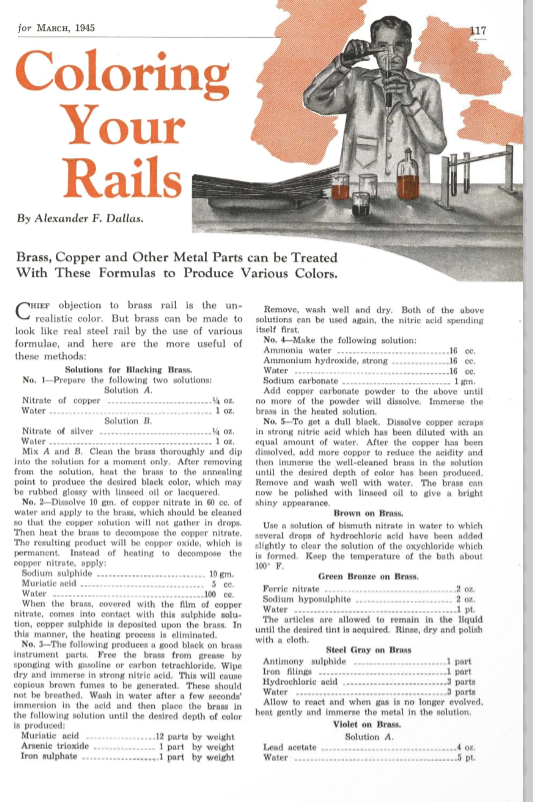
Aristotle referred to arsenic as far back as the fourth century B.C. In the 17th-19th centuries, several arsenic compounds were used as medicine. In Victorian times, it was mixed with vinegar or chalk and eaten by women to supposedly “improve” their complexion by making it lighter.
For many years, arsenic was used as a wood preservative and added to agricultural insecticides and poisons. Due to its toxicity, that practice was banned in the US in 2004. Arsenic occurs naturally in nature in volcanic ash, mineralized groundwater, and even in soil and food. Today, arsenic is still used as a metal alloying agent, as well as in the processing of glass, pigments, textiles, and more.
The United States Environmental Protection Agency (EPA) states that all forms of arsenic are a serious risk to human health. It’s also listed as a carcinogen.
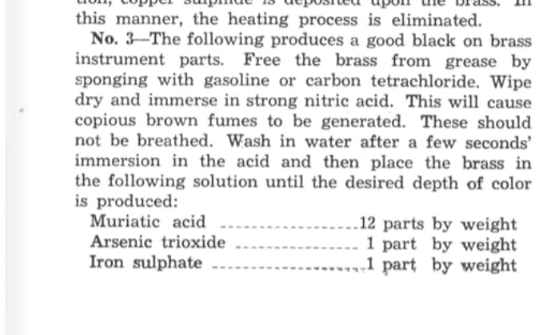
In the March 1945 issue, the article “Coloring Your Rails” lists recipes to add color to brass rail. The third recipe for black includes arsenic trioxide. It’s rather shocking to read the text that states “This will cause copious brown fumes. . these should not be breathed.” Yikes!
Carbon tetrachloride
This chemical is a colorless liquid with a sweet odor that was first synthesized in 1839 after a reaction between chloroform with chlorine. It’s a manufactured chemical that does not naturally occur in nature.
Until the mid-twentieth century, carbon tetrachloride was widely used as a cleaning solvent, a dry-cleaning agent, a refrigerant, in lava lamps, and even in fire extinguishers until the USDA banned its use in consumer products in 1970.
Carbon tetrachloride, either inhaled or absorbed through the skin, can damage many organs including the kidneys, liver, and central nervous system. It’s toxic if swallowed and, according to the EPA, is suspected of causing cancer.
Because it was widely used as a cleaning agent, it’s not surprising that model railroaders used it in a variety of ways. I found an article from the November 1948 issue, where the layout owner cleaning his rails daily using carbon tetrachloride.
Formaldehyde
Scientists didn’t discover formaldehyde until 1859, and it was an accidental discovery. It’s an organic compound found in nature. Did you know that some vegetables, like cabbage, release formaldehyde when cooked?
Today, formaldehyde is still widely used in a number of ways. For instance, it’s often used in vaccine development, and is an important ingredient in many strong adhesives. It’s commonly used to make resins for plywood, flexible foams, insulation, and more. An interesting note that embalming, what many of us first think of when we hear the word “formaldehyde,” is considered a minor use of the compound.
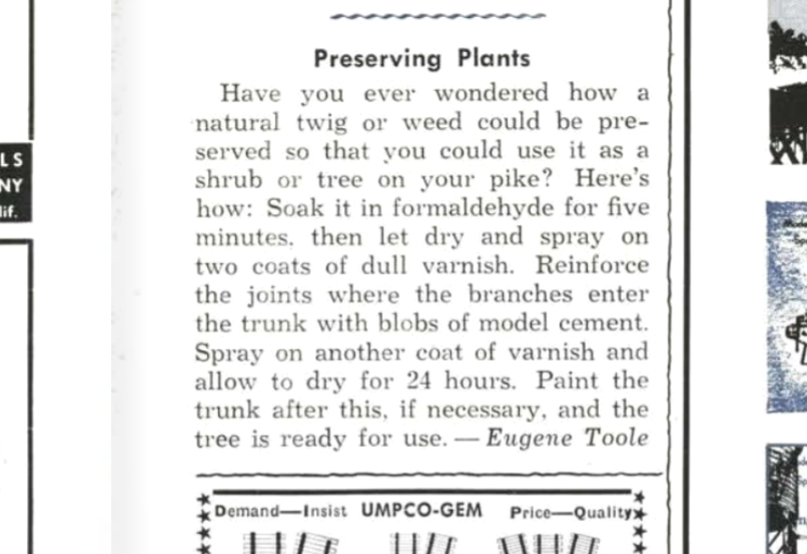
Formaldehyde causes many health problems, including headache, difficulty breathing, and even death with prolonged exposure. It’s classified as a carcinogen.
In the April 1954 issue, one hobbyist suggested using formaldehyde to preserve twigs/weeds for use on your layout.
Gasoline
While gasoline was discovered in the late 1850s, it wasn’t widely used until after 1892, with the invention of the automobile.
Gasoline is extremely flammable due to its low flash point, and the vapors spread rapidly. It is toxic and considered a carcinogen by the National Institute for Occupational Safety and Health.
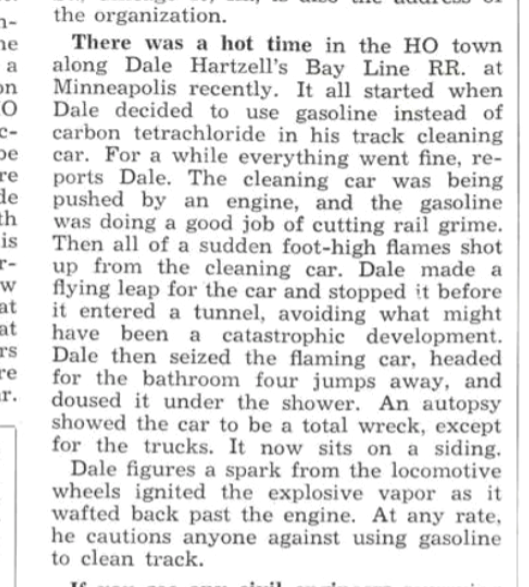
While many of us likely have cans of gasoline in our garage to power lawn equipment, its use on model railroads is not something we’ve ever considered. Dale Hartzell, as printed in the June 1948 issue, thought gasoline was worth a try in his track cleaning car. He quickly learned a lesson that it was highly flammable, as “foot-high flames shot up from the cleaning car.” (The fire was quickly extinguished.)
Radium/radon
Radium was discovered in an ore mine in the Czech Republic by Marie and Pierre Curie in 1898. By the 1920s, it was widely used in self-luminous paints for watches, clocks, and instrument dials. It was once an additive in toothpastes, hair creams, and even food due to its “curative” powers. It was also used in the medical field as a cancer treatment.
Today, radium is used in the atomic, molecular, and optical physics field. It’s also still used in some industrial radiography devices to check for flawed metallic parts.
Radium is considered one of the most toxic of the radioactive chemicals. The body treats radium as calcium, depositing it in the bones. The alpha and gamma rays emitted from radium cause cancer and other disorders. It can affect the bones, blood, eyes, and teeth. There’s little good to be said about radium and its dangers to humans.
The discovery of a “radium train” in the July 1949 issue was quite a surprise. What appears to be an O gauge GG1 running on radon (a radioactive gas derived from radium) once operated in the Cleveland Clinic in Cleveland, Ohio. The train installation was touted as “only the beginning” of a larger installation of an automatic conveying system.
I wonder what happened to this system, and unfortunately, Google searches yielded nothing. If anyone has information about this project, please leave a comment at the end of this article.





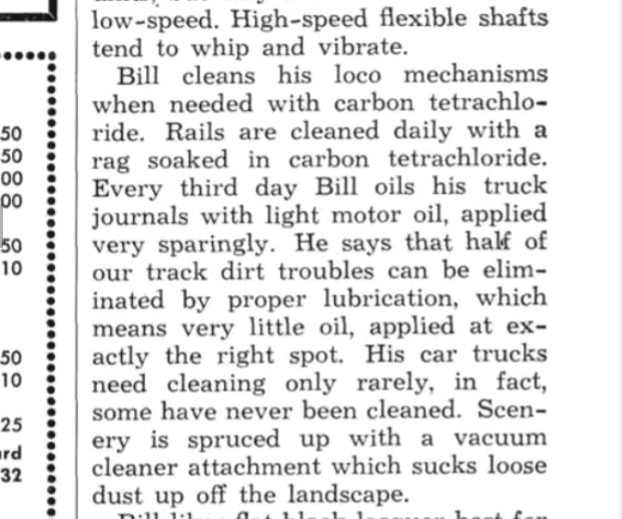
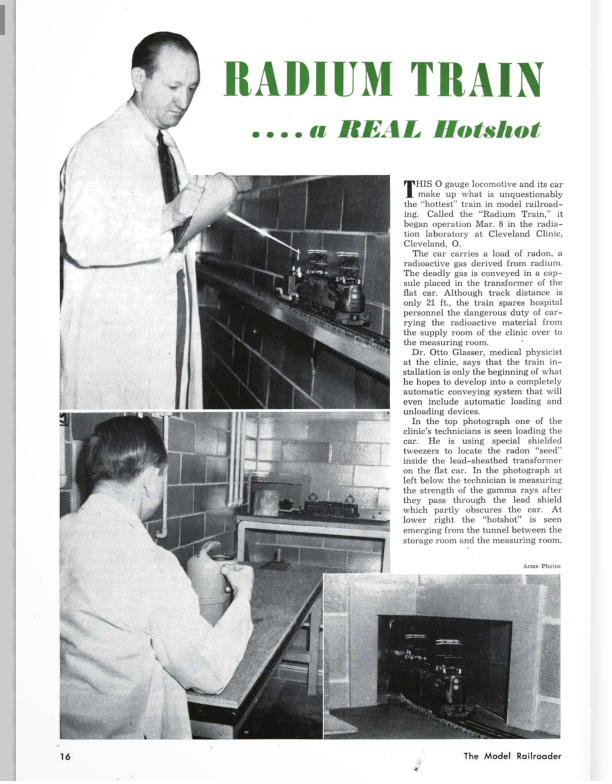



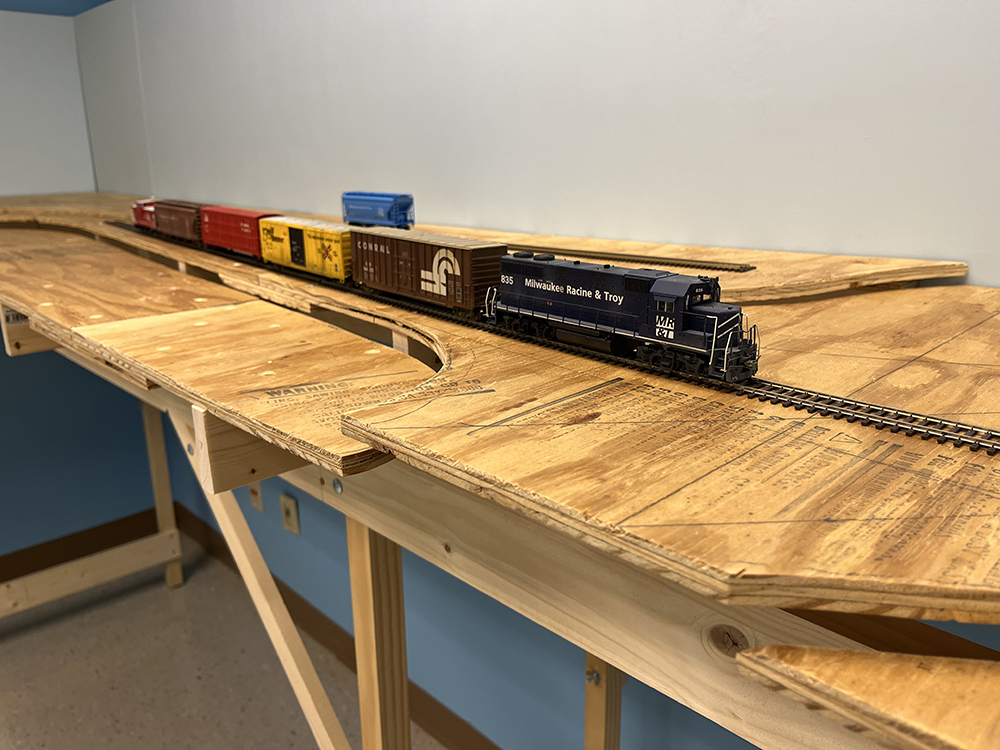





The article states the train carried radon. It does not run on radon.